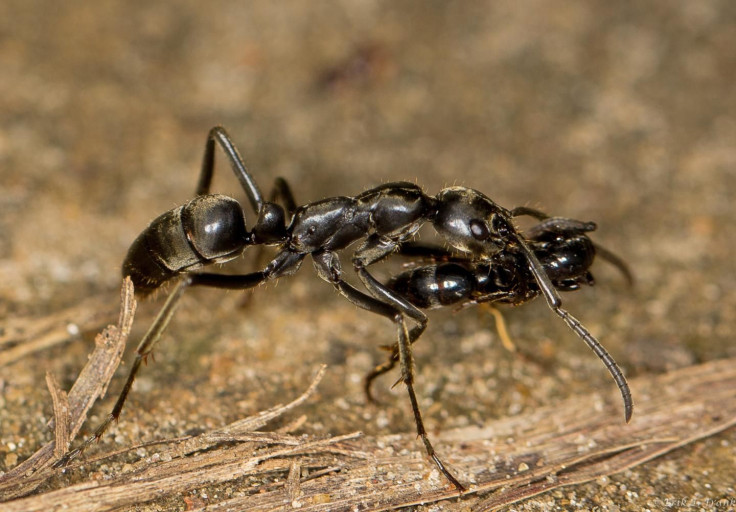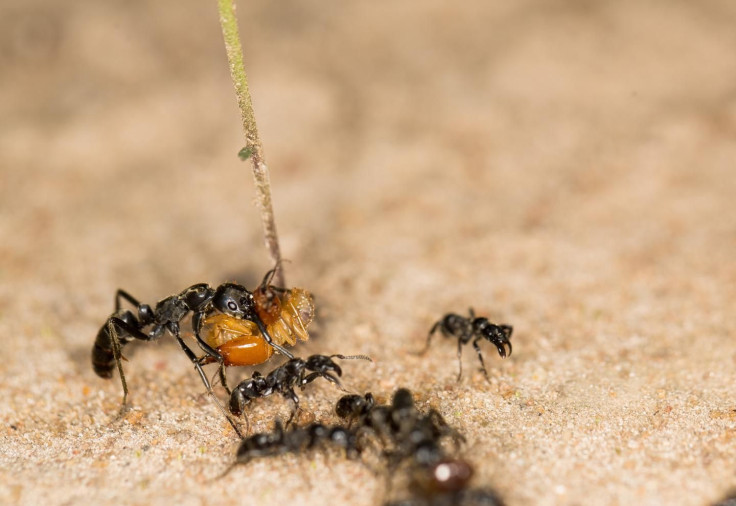Rescue Ants? Termite-Hunting Insects Carry Their Injured Comrades Back Home

There are casualties of war among ants too, at least when they go hunting for prey, as in the case of the African Matabele ants (Megaponera analis). Found across a large part of sub-Saharan Africa, these ants specialize in hunting termites, an activity they indulge in two to four times everyday.
But catching prey isn't a cakewalk. The termites being attacked put up a fight, and several ants are killed and injured during their raids on termite nests. However, researchers from the University of Würzburg, Germany, observed a phenomenon among the ants that has never before been seen in insects: M. analis rescue their injured comrades from the battlefield and carry them back to their nest to recuperate.
In the crowd of thousands of bodies, how do the ants find their injured kin? According to a statement released Wednesday by the university: "When an ant is injured in a fight, it will 'call' its mates for help by excreting chemical substances. The injured insect is then carried back to the nest where it can recover after receiving treatment. What is the 'therapy' like? Usually, treatment involves removing the termites still clinging to the ant."
The soldier termites have powerful jaws they use to defend themselves and the worker termites that are the preferred prey of M. analis. About 32 percent of ants who tried returning to their nest without help died as a result of dismemberment or termites still stuck to their bodies, the study found.

The researchers called the finding unexpected, especially for social insects, where individual members don't usually have much value. They surmised the rescue behavior pays off for the colony as a whole, which can be almost 29 percent larger as a consequence.
"We have observed helping behavior vis-à-vis injured animals for the first time in invertebrates," Erik Frank, a PhD student at the university and lead author of the study, said in the statement.
The findings were described in a paper titled "Saving the injured: Rescue behavior in the termite-hunting ant Megaponera analis," that was published Wednesday in the journal Science Advances.
© Copyright IBTimes 2024. All rights reserved.





















